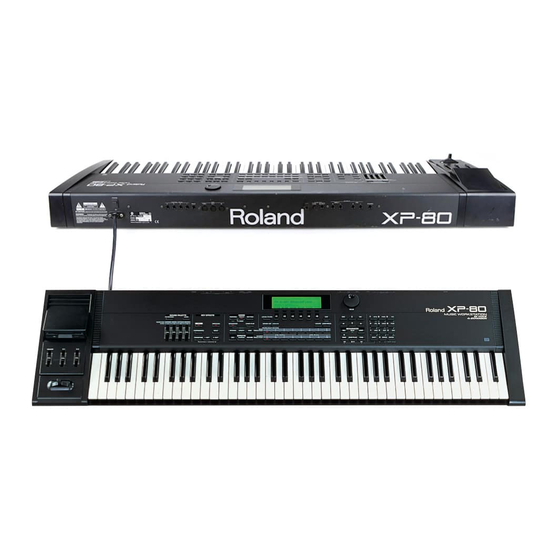
Roland XP-80 Manuals
Manuals and User Guides for Roland XP-80. We have 6 Roland XP-80 manuals available for free PDF download: Owner's Manual, Service Manual, Quick Start Manual, Supplemental Notes
Roland XP-80 Owner's Manual (251 pages)
64 voice 4x expansion
Brand: Roland
|
Category: Musical Instrument
|
Size: 23 MB
Table of Contents
Advertisement
Roland XP-80 Owner's Manual (248 pages)
Brand: Roland
|
Category: Musical Instrument
|
Size: 1 MB
Table of Contents
Roland XP-80 Quick Start Manual (36 pages)
Music Workstation 64 Voice 4 x Expansion
Brand: Roland
|
Category: Musical Instrument
|
Size: 0 MB
Table of Contents
Advertisement
Roland XP-80 Service Manual (37 pages)
Brand: Roland
|
Category: Musical Instrument
|
Size: 5 MB
Table of Contents
Roland XP-80 Supplemental Notes (9 pages)
Brand: Roland
|
Category: Musical Instrument
|
Size: 0 MB
Table of Contents
Roland XP-80 Supplemental Notes (9 pages)
Brand: Roland
|
Category: Musical Instrument
|
Size: 0 MB





